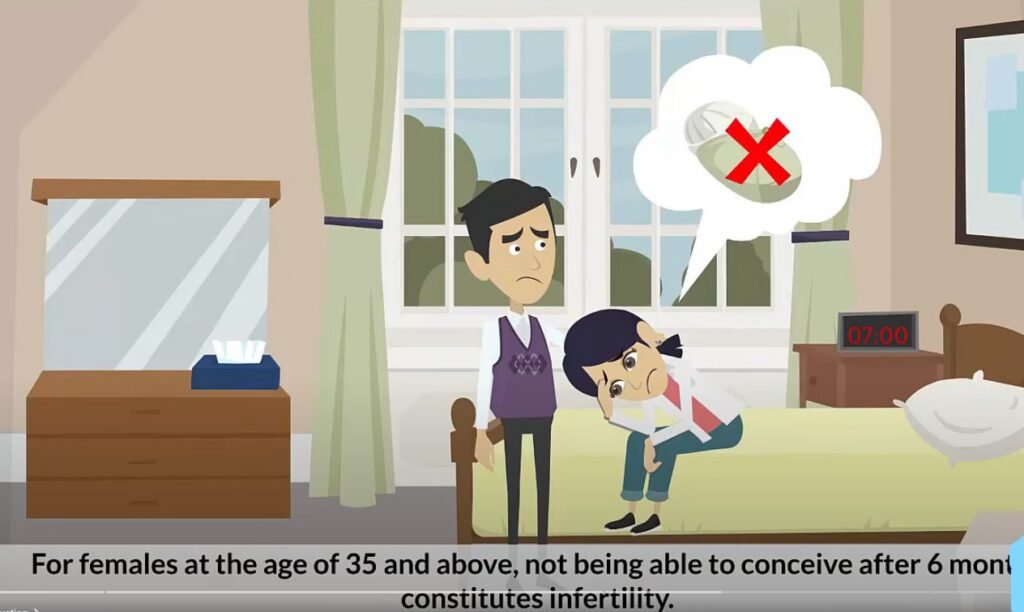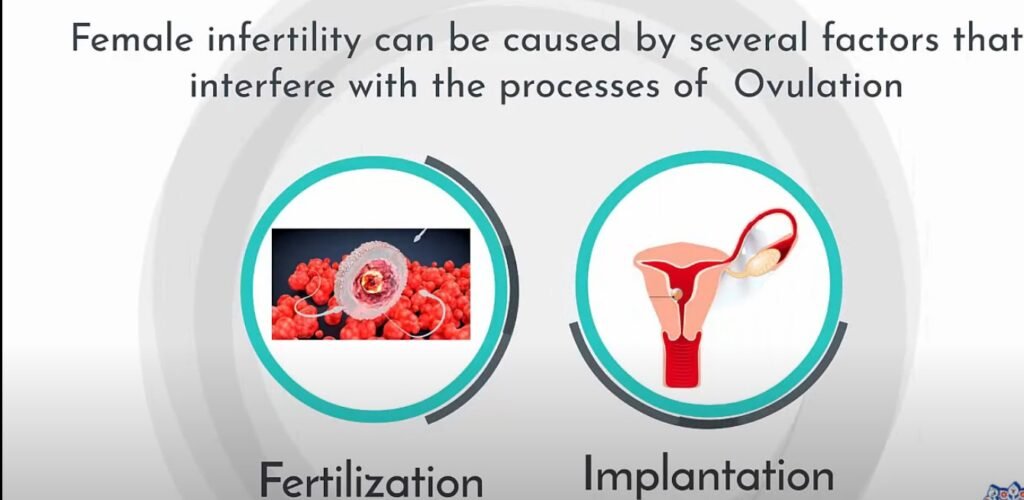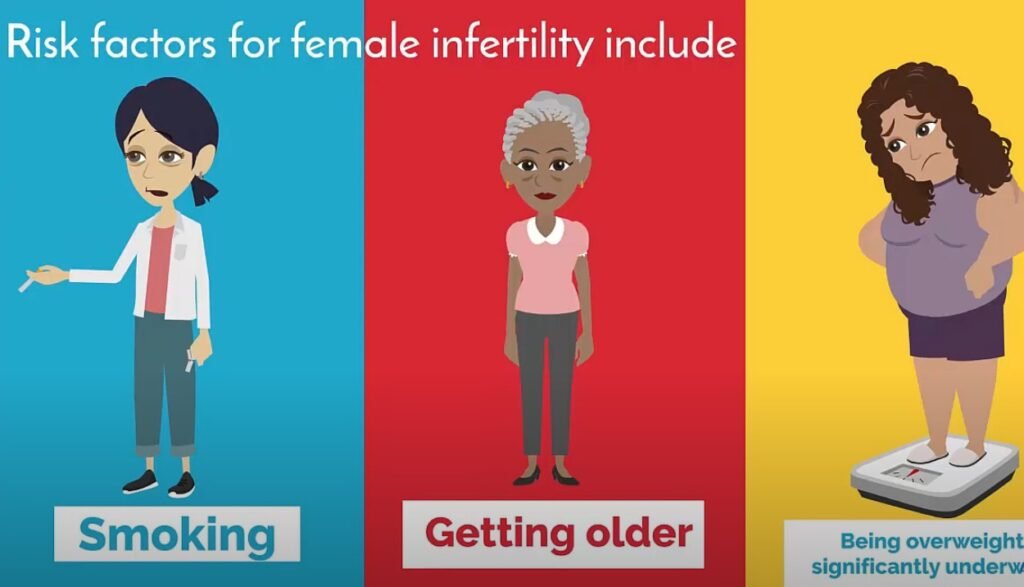Exploring Female Sterility
Female sterilization stands as a permanent method of preventing pregnancy by blocking the fallopian tubes. Female Sterility This article dives into the intricacies of this procedure, exploring its types, effects, administration, recovery, effectiveness, benefits, disadvantages, risks, and a comparison with vasectomies. Female sterility, often misconstrued with frigidity, denotes the inability to conceive and bear a living baby. It’s essential to differentiate between these terms as they involve distinct aspects of reproduction.
Types of Female Sterilization
Surgical Method: Tubal Ligation
Tubal ligation, commonly known as “getting your tubes tied,” involves cutting or sealing the fallopian tubes. This procedure is often performed using laparoscopy, with options such as cutting and folding the tubes, removing sections, or blocking them with bands or clips.
Nonsurgical Approach: Essure
Essure, a now-recalled method, involved inserting tiny metal coils into the fallopian tubes through the vagina and cervix. Scar tissue eventually formed around the coils, blocking the tubes. However, due to reported complications, including pain and allergic reactions, Essure has been removed from the market.
How Female Sterilization Works
Female sterilization blocks or seals the fallopian tubes, preventing eggs from reaching the uterus and sperm from reaching the egg. This effectively prevents fertilization, ensuring pregnancy cannot occur. While tubal ligation is immediately effective, nonsurgical methods may take up to three months to become fully effective.
Procedure and Recovery
Both surgical and nonsurgical procedures require a doctor’s expertise. Tubal ligation is typically performed under anesthesia, with the surgeon accessing the reproductive organs through small incisions. Recovery generally takes between two to five days, with patients often discharged on the same day as the procedure.
Effectiveness and Benefits
Female sterilization boasts nearly 100% effectiveness in preventing pregnancy. It offers a permanent birth control solution without affecting hormones, menstruation, or sexual desire. Moreover, some evidence suggests it may slightly reduce the risk of ovarian cancer, making it an attractive option for many women seeking long-term contraception.

Disadvantages and Risks
While effective, female sterilization is irreversible and thus not suitable for women considering future pregnancies. Tubal ligation reversal procedures are often unsuccessful, and nonsurgical sterilization is never reversible. Additionally, female sterilization does not protect against sexually transmitted infections (STIs) and carries risks such as infection, bleeding, and in rare cases, ectopic pregnancy.
Female Sterilization vs. Vasectomies
Female sterilization and vasectomies are both permanent sterilization methods, with vasectomies being the male equivalent. While vasectomies may take a few months to become effective, they offer some advantages such as lower cost and perceived invasiveness compared to tubal ligation.
Outlook
Before opting for female sterilization, it’s crucial to consult with a healthcare provider to weigh the risks and benefits. Despite its effectiveness, it’s essential to remember that female sterilization does not protect against STIs, necessitating the continued use of condoms for STI prevention.
Mechanism of Conception

Sperm Movement:
Conception hinges on the journey of sperm from the vagina to the fallopian tubes. Alkaline fluid secreted from the vaginal walls facilitates this movement, crucial for fertilizing the female egg.
Factors Influencing Fluid Secretion:
Nerve supply to vaginal ducts and alkalinity of vaginal fluid are pivotal. Strengthening the nervous system through rest, relaxation, and a proper diet is imperative for optimal fluid secretion.
Identifying Causes of Female Sterility
Physical Defects:
Structural abnormalities in reproductive organs may result from congenital or accidental factors. Malformations or sagging of the womb and collapse of fallopian tubes are common issues.
Physical Debility:
Poor health stemming from acute or chronic diseases can lead to sterility. Conditions like gonorrhea, syphilis, and chronic anemia affect both physical well-being and genital organs.
Functional Faults:
Loss of essential reproductive organs or their functions can result from various factors such as surgical injuries or hormonal imbalances. Psychological stressors can also contribute to sterility.
Proper Treatment for Female Sterilization
Treatment
- Structural defects can be ascertained by a thorough physical examination and radiology and can be set right by surgery. Simple and efficient natural healing techniques can be used to remedy both physical debility and the functional flaws of organic nature.
- These methods include hygienic living, optimum nutrition and following all the laws of nature Fasting is the best remedy for the treatment of disorders resulting from toxins in the system.
- Women who are unable to conceive should regularly observe brief fasts lasting two or three days. During the fasting phase and subsequently when needed, a warm water enema should be used to clear the bowels. This will benefit the surrounding organs of the urinary and vaginal systems in addition to the stomach system. Diet is the most important factor in the treatment of sterility. It should consist of three basic health-building food groups, namely i) seeds, nuts and grains, (il) vegetables and fruits.
- The best way to take milk is in its soured form, that is, curd and cottage cheese. Each food group should roughly form the bulk of one of three meals. About 70 to 80 per cent of the diet should consist of foods in their natural uncooked state, because cooking destroys much of the nutritional value of most foods. Sprouting is an excellent way of consuming seeds, beans and grains in their raw form as in the process of sprouting the nutritional value is multiplied, new vitamins are created and the protein quality is improved.
- The daily menu of a health-building and vitalising diet may be on the following lines:
- After waking up: A glass of warm water with a teaspoon of honey and half a lemon’s juice.
- Breakfast consists of a glass of milk and fresh fruit such as apples, oranges, bananas, grapes, and grapefruit.
- Lunch consists of two or three whole wheat chappattis, a glass of buttermilk, and a bowl of steaming veggies seasoned with salt and vegetable oil or butter.A glass of fresh fruit or vegetable juice in the middle of the day.
- Dinner is a big dish of salad with sprouted moong, or Bengal gram, and fresh veggies like tomatoes, carrots, beets, and onions.
- An apple or a glass of milk before bed.
- Avoid foods high in fat, spicy foods, strong tea, coffee, white sugar, white flour, refined cereals, meat dishes, and greasy or fried foods. Smoking and drinking, where habitual, must be completely given up.
- Certain nutrients, especially vitamins C and E and zine, have been found helpful in some cases of sterility. A woman who is not able to conceive ought to take 1000 mg every day. vitamin C,
- 100 I.U. of vitamin E and 30 mg, of zinc. In cases when there are no congenital malformations or organic problems, some treatments have also been found to be effective in treating female sterility. The sensitive roots of the banyan tree are one such cure. After drying in the shade, grind these roots into a fine powder. This powder should be mixed five times their weight with milk and taken at night for three consecutive nights after the monthly periods are over. No other food should be taken with this. It should be done again each month until conception occurs, following the end of the menstrual cycle. An infusion of the fresh tender leaves of jambul fruit (Jamun), taken with honey or buttermilk, is an excellent remedy for sterility and miscarriage due to ovarian or endometrium functional disorders. The leaves presumably stimulate the secretion of progesterone hormone and help the absorption of vitamin En
- Certain yogasanas which help tone up the gonads should also be practised regularly for overcoming female sterility.
- The eggplant is also useful in overcoming functional sterility, Cooked tender eggplants, should be eaten with butter-milk everyday for a month or two for this purpose. It increases the capacity to absorb vitamin I and stimulates the secretion of progesterone. Mud packs, hip baths, and wet girdle packs are examples of cold water treatments that can assist overcome female sterility. The genital organs will experience significant improvements in internal circulation as well as relief from various forms of inflammation and other anomalies as a result of these therapies. You can apply mud packs on your sexual organs and abdomen. For a hip bath, a common tub may be used. The tub may be filled with sufficient water to cover the hips, when a person sits inside it. The cold hip bath should be taken for 10 minutes at a water temperature of 50° to 65°F. Wearing thin underwear that has been wrung in cold water is advised for damp girdle packs. Over this, a thick dry cotton or woolen underwear should be worn. All cold treatments should be suspended duting menstruation.
- ardhamatsyendr asana, paschimottan asana and shallabh asana. In addition to maintaining good hygiene, getting enough sleep, and relaxing, all of these measures will help overcome female infertility.
Natural Remedies:
Hygienic living, optimal nutrition, and adherence to natural laws play crucial roles in treating physical debility and functional faults. Fasting, supplemented with warm water enemas, aids in detoxification.
Dietary Modifications:
A health-building diet rich in seeds, nuts, vegetables, and fruits is essential. Emphasizing raw foods and sprouted grains enhances nutritional intake, promoting overall well-being.
Holistic Dietary Plan
Daily Menu:
- Morning: Lukewarm water with lemon juice and honey
- Breakfast: fruits and one glass of butter milk
- Lunch: Steamed vegetables, whole wheat chapattis, and buttermilk
- Mid-afternoon: Fresh fruit or vegetable juice
- Dinner: Salad, sprouted legumes, and a glass of milk or an apple before bed
Dietary Restrictions:
Avoiding excessive fat, spicy foods, refined sugars, and alcohol is crucial. Smoking should be discontinued, and alcohol consumption minimized.
Supplements and Remedies
Vitamin and Mineral Supplements:
Daily intake of vitamin C, vitamin E, and zinc may aid in addressing certain cases of sterility.
Herbal Remedies:
Natural remedies like banyan tree root powder and jambul fruit infusion have shown promise in promoting fertility.

Additional Measures
Cold Water Treatments:
Hip baths and wet girdle packs improve genital circulation and relieve inflammation.
Yogasanas:
Practicing specific yoga poses like ardhamatsyendrasana and paschimottanasana can help tone the reproductive organs.
Conclusion
Understanding the complexities of female sterility is crucial for effective treatment. By adopting a holistic approach that includes dietary modifications, natural remedies, and lifestyle adjustments, women can enhance their chances of conception and overcome sterility challenges.

FAQs (Frequently Asked Questions)
1. Can stress contribute to female sterility?
- Yes, psychological factors like stress, anxiety, and depression can impact fertility. Seeking support and practicing relaxation techniques may help alleviate these issues.
2. Are there specific dietary recommendations for addressing sterility?
- Yes, emphasizing a diet rich in fruits, vegetables, and whole grains while avoiding processed foods and alcohol can support reproductive health.
3. How can natural remedies like banyan tree root powder aid in fertility?
- Banyan tree root powder has been traditionally used to promote fertility due to its purported benefits on reproductive health. However, its efficacy may vary among individuals.
4. Is there a role for traditional herbal remedies in treating sterility?
- Some herbal remedies, like jambul fruit infusion, have been studied for their potential in addressing sterility. However, this is important to consult with a health cure provider before using any new treatments.
5. Can lifestyle modifications improve fertility?
- Yes, adopting a healthy lifestyle that includes regular exercise, adequate sleep, and stress management can positively impact fertility outcomes.